Over the wet season at Paluma a cohort of male Victoria’s Rifle Birds went through big changes in appearance and behaviour.
Until they are four or five years old the male rifle birds are almost indistinguishable from the females of the species with elegant but muted plumage in various shades of brown, buff and cream. The change to fully male appearance and behaviour may not be fully complete until their sixth year.
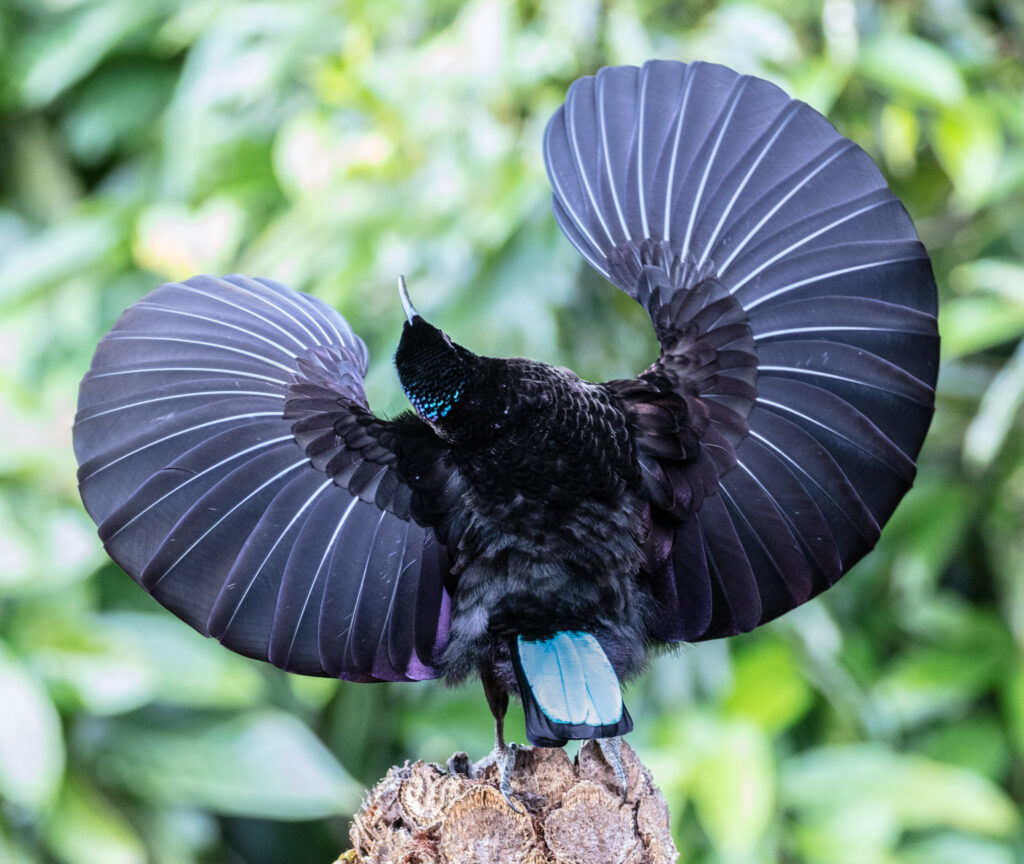
The changes here took place over a few months as the young males replaced their demure female plumage until becoming fully fledged males clad in velvety black with iridescent neon blue caps and throats with a layered “skirt” in a colour that’s a bit hard to call.
As the change approaches male birds still in female plumage begin practicing their display routines, marked by a progression of vocalisations, postures and movements performed usually atop a broken off vertical tree or tree fern.
The first stage is to call from the display perch and expose their yellow gape to attract attention. Victoria riflebirds make a sound like “yass,” and once a female arrives at the display site, the second stage involves the male turning to face the female, raising his wings above his head to form a circle, again exposing his gape, and raising and lowering his body on his legs. If a female approaches, the male begins the third display stage directly in front of the female described as an “alternate wing clap”, lowering one wing and hiding his head behind the other and then switching from side to side in quick succession.
If the courtship reaches a mutually agreeable conclusion it is left to the female to undertake all nest construction, incubation and feeding of the nestlings, usually two in number. Incubation lasts 18 or 19 days and then the young are fed by the female for a couple of weeks. The nestlings become fully independent of mum after about 10 weeks.
But the subject of this post is the progression of the change to adult male plumage, with a number of individuals photographed over a period from early January until early March on our back deck next to the Rainforest Track (Soon to be named the Hyland Track). By March it seemed all the cohort had completed the change.
Here’s a selection from the fascinating passing parade since late December. Click on any photo to see a larger version.
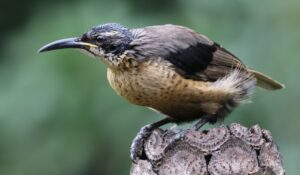
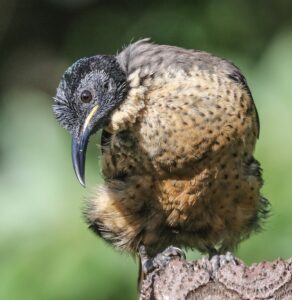
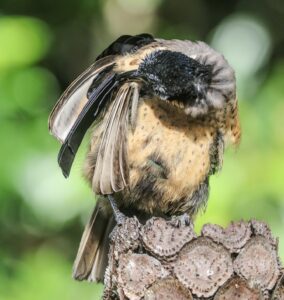
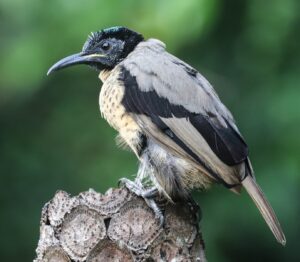
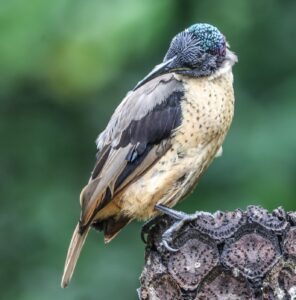
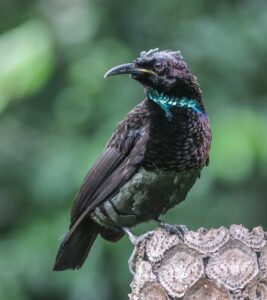
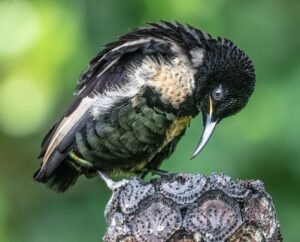
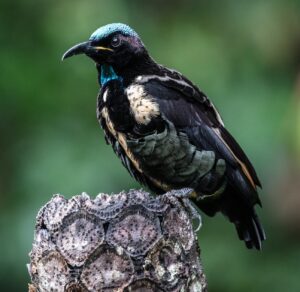
The transformation of this cohort seemed complete by late March. The Australian Museum says the breeding season runs from August to February but before then you can still expect to see plenty of practice displays.
When showtime arrives, we can expect displays including these poses below, photographed on 28 March.
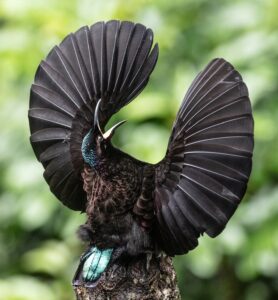
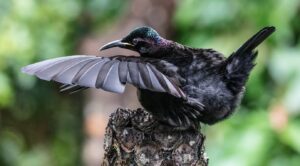
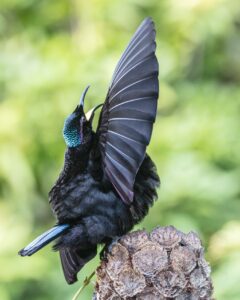
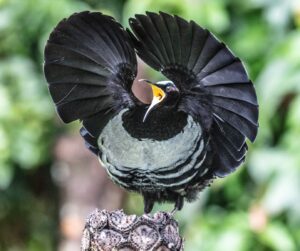
Text and Photos by Peter Cooke
Some further facts from Jamie Oliver:
Our rifle bird in Paluma is one of just three species in Australia, but it’s a member of a rich and fascinating family of “birds of paradise” (Paradisaeidae) which is comprised of 45 species in 17 genera.
Outside Australia they are only found in PNG and eastern Indonesia. Most of the overseas species are confined to rainforests and they are even more spectacular in their plumage and their displays which serve show off that splendour to prospective mates.
A “fascinating factoid” about birds of paradise is how they got their name. Reference to paradise in their name originates from a mis-interpretation of preserved specimens – Wikipedia states:
This species was described from specimens brought back to Europe from trading expeditions in the early sixteenth century. These specimens had been prepared by native traders by removing their wings and feet so that they could be used as decorations. This was not known to the explorers, and in the absence of information, many beliefs arose about them. They were briefly thought to be the mythical phoenix. The often footless and wingless condition of the skins led to the belief that the birds never landed but were kept permanently aloft by their plumes. The first Europeans to encounter their skins were the voyagers in Ferdinand Magellan‘s circumnavigation of the Earth. Antonio Pigafetta wrote that “The people told us that those birds came from the terrestrial paradise, and they call them bolon diuata, that is to say, ‘birds of God’.” This is the origin of both the name “bird of paradise” and the specific name apoda – without feet.
Wikipedia – https://en.wikipedia.org/wiki/Bird-of-paradise
Footnote from PC: Wiki uses the language of colonisation and empire to tell us that the Victoria’s riflebird was “discovered” (my quote marks) by John Macgillivray for John Gould in 1848 and is named after Queen Victoria of the United Kingdom. The common name “riflebird” comes from the likeness of their black velvety plumage to the uniform of the British Army Rifle Brigade.
So far haven’t been able to source any indigenous knowledge from the original discoverers of the VRB.

Fantastic article Peter and your photographs documenting the changes to the plumage are remarkable. A brilliant and informative article, thank you!
Amazing photos. Fascinating to see this development over time.
How fascinating about “birds of Paradise” …and excellent pics Peter
Well said. A good example of how bird names come into being!